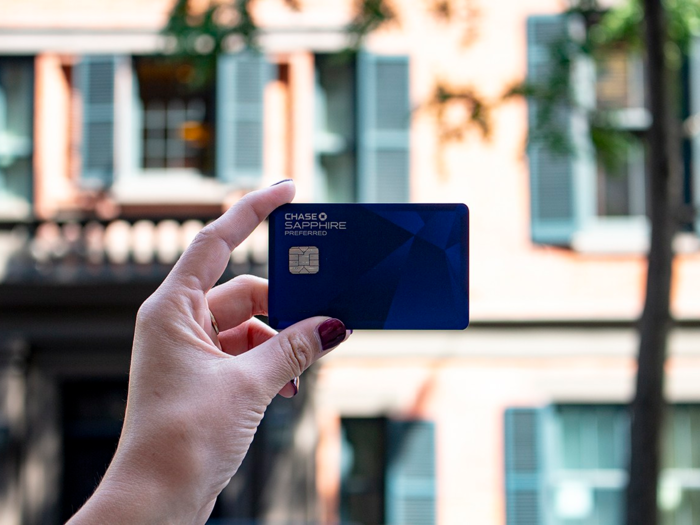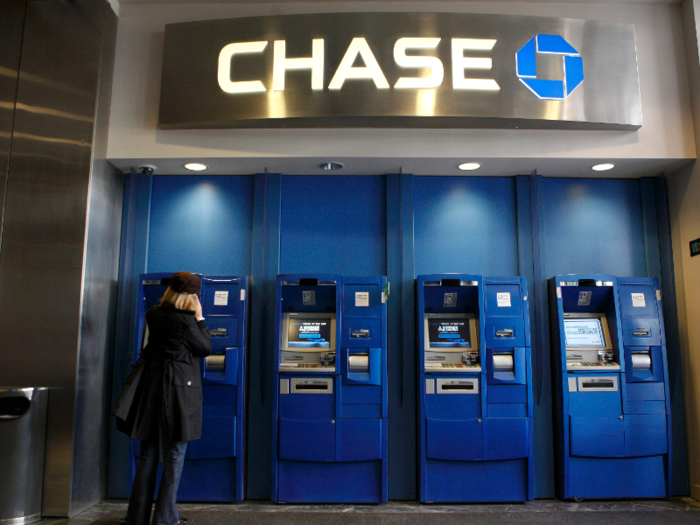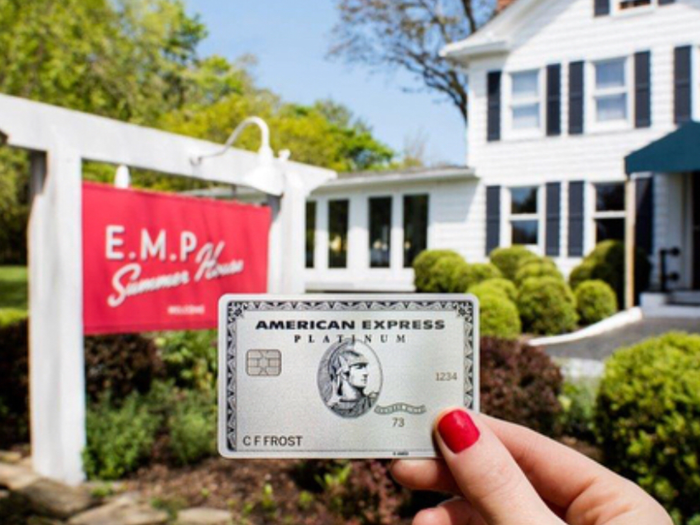- Home
- slideshows
- miscellaneous
- The best credit card rewards, bonuses, and perks of 2019
The best credit card rewards, bonuses, and perks of 2019
Chase Sapphire Reserve

American Express Gold Card

Welcome offer: 25,000 points (after spending $2,000 in the first three months). If you apply by January 9, 2019: Get up 20% back at US restaurants within the first three months, up to $100 total.
This fall, American Express refreshed its old Premier Rewards Gold Card, rebranding it simply as the American Express Gold Card. It also totally overhauled the rewards and benefits on the new Gold Card, making it one of the most exciting — and valuable — cards of 2018.
The new Gold Card earns a massive 4x points at US restaurants and on up to $25,000 per year at US supermarkets (and 1x point after that), 3x points on flights booked directly through the airline, 2x points on hotels booked and prepaid through AmEx Travel, and 1x point on everything else.
Based on the fact that you can easily redeem Membership Rewards points for more than 1¢ of value each when you transfer them to frequent flyer partners, that makes this one of the highest-earning available cards for everything food-related.
The Gold Card also offers up to $120 of dining credits per year, broken into chunks of $10 each month. Credits are good for purchases through food delivery services Seamless and GrubHub, and at The Cheesecake Factory, Ruth's Steak House, or participating Shake Shack locations.
Additionally, the card offers a $100 airline fee credit each calendar year, which is good for things like checked bags, on-board food and drinks, seat reservations, seat upgrades, lounge day passes, and more.
The two credits — together worth $220 — are almost enough to offset the card's $250 annual fee even before factoring in the value of the rewards you'll earn.
While it's difficult to assign an exact value to Membership Rewards points, since the value can vary significantly based on how you redeem them, travel website The Points Guy subjectively estimates each point as worth 1.9¢. That makes the welcome bonus worth $575 — $475 for the points, and up to $100 back from restaurants. Keep in mind some people may be targeted for a higher welcome offer.
The new card comes in a chic metal design, and until January 9th, you can request a limited-edition Rose Gold version.
Pros: Fantastic rewards on dining and groceries, statement credits and benefits to offset the annual fee.
Cons: You'll have to pay the $250 annual fee before you get the value back from the credits, smaller sign-up bonus, only 1¢ per point of value unless you transfer points to an airline.
Click here to learn more about the AmEx Gold Card from Insider Picks' partner: The Points Guy.Chase Sapphire Preferred

Sign-up Bonus: 50,000 points (after spending $4,000 in the first three months)
The Reserve’s older sibling, the Sapphire Preferred offers a number of similar features and an identical sign-up bonus for a lower annual fee. The card earns 2x Ultimate Rewards points instead of the Reserve’s 3 x points on dining and travel, and 1x point on everything else.
Points are worth a lower 1.25¢ on travel booked through Chase, but can still be transferred to frequent flyer and hotel loyalty programs. There’s no annual travel credit, but there’s still car rental primary coverage, as well as slightly less-generous trip delay coverage and purchase protection. The annual fee is a more manageable $95, which is waived the first year.
While the Sapphire Preferred was the all-around best card for a long time, the Sapphire Reserve has made it a harder choice. Although the Preferred has a lower annual fee, it earns fewer points on bonus spending categories than the Reserve, and the value of the points on travel booked through Chase is less. The no-hassle travel credit on the Sapphire Reserve makes the annual fee on that card effectively $150 (accounting for the $300 you get back through the credit), so — depending on your spending habits — it can be worth paying more up front for the Sapphire Reserve.
Pros: Good sign-up bonus, transferable points, travel perks, lower annual fee than the Sapphire Reserve card (and it's waived the first year)
Cons: Lower point value when purchasing travel through Chase, no annual travel credit, earns points more slowly than the Sapphire Reserve
Click here to learn more about the Chase Sapphire Preferred from Insider Picks' partner: The Points Guy.Chase Freedom Unlimited

Sign-up Bonus: 15,000 points or $150 cash back (after spending $500 in the first three months)
If you already have the Sapphire Reserve or Preferred and are saving your points for something, the Freedom Unlimited can give your balance a nice boost. While Chase markets the card as “cash back,” it actually earns Ultimate Rewards points that you can redeem for cash (1 point = 1¢).
When you have a premium card like one of the Sapphires or an Ink Business card, you can pool your points from the two cards.
The Freedom Unlimited earns 1.5x points per dollar spent, so paired with a Sapphire Reserve, it’s a great card to use for purchases that aren’t made on travel expenses or dining.
Best of all, the card has no annual fee and often has an introductory 0% APR for the first 15 months on purchases and balance transfers. After that, there's a 16.74%-25.49% variable APR. If you have a major purchase ahead of you, that introductory offer can be useful.
The Chase Freedom Unlimited is a fantastic all-around card. However, to get the most value when it’s time to spend your points, you need the Sapphire Reserve or Preferred card, too, so you can pool your points. Otherwise, points are only worth 1¢ each no matter how you use them and they can’t be transferred to airline or hotel partners.
Pros: Decent sign-up bonus, earn points on regular purchases, no annual fee, zero percent APR for first 15 months (and a 16.74%-25.49% variable APR after that)
Cons: One point only equals one cent for cash back, to get a better value you'll need to pair it with a Sapphire card
Click here to learn more about the Chase Freedom Unlimited from Insider Picks' partner: The Points Guy.Platinum Card from American Express

Welcome offer: 60,000 points (after spending $5,000 in the first three months)
American Express has made some big moves recently in the credit cards rewards war, starting with a refresh of the venerable Platinum Card to strike against the Sapphire Reserve.
One big change: AmEx upped the Platinum Card's standard welcome offer. Previously, it was only 40,000 points, and now it's 60,000. AmEx is also offering 5x Membership Rewards points per dollar spent on airfare directly with airlines and up to $200 in credits with Uber each year, broken into a monthly credit of $15 (which rises to $35 in December).
Like Chase Ultimate Rewards points, American Express Membership Rewards points can be used to purchase travel, gift cards, or products directly through from the issuer, or they can be transferred to certain airline and hotel loyalty programs. The best value comes from that latter use. If you redeem points by using them to book travel through AmEx, you'll get around 1¢ per point.
The Platinum Card includes access to the same lounges as the Sapphire Reserve, plus Delta Sky Clubs and the proprietary American Express Centurion Lounges — the additions make the card more useful overall. AmEx has also announced a number of new Centurion Lounges set to open next year, as well as improvements and expansions of current locations.
It carries a number of perks similar to its rival from Chase, including purchase protections and a $200 annual credit on incidental airline fees — think checked bags, drinks, and upgrades. Cardholders also earn elite status with major hotels before staying a single night, including Hilton, Starwood, and Marriott. That can help you stomach the $550 annual fee.
AmEx Platinum cardholders also get exclusive access to major events and experiences, including once-in-a-lifetime "By Invitation Only" events.
Of course, $550 is a lot to pay out each year. The $200 airline fee credit and $200 Uber credit certainly help, but the airline credit can be difficult to use if you aren’t checking bags or buying drinks on flights. Some people have found that buying gift cards from the airline of your choice counts as a qualifying purchase.
The bonus spending categories on this card are less generous than on the Sapphire Reserve or the AmEx Gold, meaning it can take longer to earn points unless you book a lot of flights. The spending requirement in the first three months is higher than most other cards, and Membership Reward points are worth less than Chase’s Ultimate Rewards points when used to book travel through the card issuer — only 1¢ per point.
Even so, the card remains extremely valuable if you can make good use of the benefits. For example: In my first year with the card, I've gotten more than $2,000 worth of value, which is obviously more than enough to make up for the fee.
Pros: High welcome bonus, perks at airlines including extensive lounge access, points can go toward purchases, points are transferable to airline and hotel rewards programs, valuable benefits
Cons: High $550 annual fee, only 1¢ per point, high spending requirement, less generous earning rates than Chase Sapphire Reserve
Click here to learn more about the AmEx Platinum Card from Insider Picks' partner: The Points Guy.Capital One Venture Rewards

Sign-up Bonus: 50,000 miles (after spending $3,000 in the first three months)
Capital One’s travel rewards program isn’t necessarily as lucrative as what other banks offer. The miles can’t be transferred to hotel or airline partners, and they’re worth a fixed value of 1¢ each. The flip side, though, is that they’re easy to earn and easy to use — and thanks to a new partnership, you can earn them quickly.
The Venture Rewards card earns 2x miles per dollar on all purchases. As a new benefit, added this year, the card earns a stunning 10x miles when you book prepaid hotel stays with Hotels.com (you just need to go through a special landing page: hotels.com/venture). Plus, you can earn through Hotels.com's own rewards program at the same time.
Miles can be redeemed as a statement credit to “erase” travel purchases. For example, if you buy a $500 plane ticket, you can apply 50,000 miles to cancel out that charge. The annual fee of $95 is waived the first year.
As of December, 2018, there's another way to redeem miles. Capital One added 14 airline transfer partners — 12 are at a 2:1.5 ratio, and two are 2:1 — meaning it's now possible to get outsized value from the card. This is especially the case when you consider that you can earn 10x Capital One miles on hotels, which translates to 5–7.5 airline miles per dollar, based on the transfer ratios.
Pros: Low annual fee, easy to earn miles, massive earning potential on hotel stays, decent sign-up bonus
Cons: Points are non-transferable, only 1¢ per mile
Click here to learn more about the Capital One Venture card from Insider Picks' partner: The Points Guy.Airline Rewards Programs

Sign-up Bonus: Varies (check out our airline credit card review for the latest)
If you often travel with the same airline or live in a major hub city, you might want to consider signing up for a co-branded airline credit card. American Express issues Delta’s credit cards, Citibank offers American’s, and Chase partners with United.
Sign-up bonuses often vary through the year, but they generally fall between 30,000 and 60,000 miles after spending $3,000 in the first three months. Perks vary by card and are often valuable even if you only fly a few times a year, generally including a form of early boarding, free checked bags, and extra miles earned on purchases from that airline.
While each airline offers a few cards, the most popular ones tend to come with annual fees of $95, which are waived the first year.
However, with these cards, there’s no option to redeem your miles for cash or book travel hassle-free. Nor is there an option to choose which frequent flyer program offers the most value and flexibility for the trip you’re planning.
Instead, you’re stuck booking travel with one airline and dealing with whatever restrictions it might impose. If the airline chooses to devalue their frequent flyer program or raise costs for a particular type of award flight, you’re stuck.
The upside comes mainly with the perks like the free checked bag, and the fact that with a little bit of work, it can be possible to get an incredible value for your miles by booking an unforgettable trip in first or business class.
Pros: Airlines offer good deals, travel perks, low annual fees
Cons: There's still an annual fee, you're stuck with that airline and have less flexibility
Click here to learn more about the Citi/AAdvantage Platinum Select card from Insider Picks' partner: The Points Guy. Click here to learn more about the United Explorer card from Insider Picks' partner: The Points Guy. Click here to learn more about the Gold Delta SkyMiles card from Insider Picks' partner: The Points Guy.This content is not provided by the card issuers. Any opinions, analyses, reviews or recommendations expressed here are those of the authors’ alone, and have not been reviewed, approved or otherwise endorsed by any issuer.
Popular Right Now
Popular Keywords
Advertisement